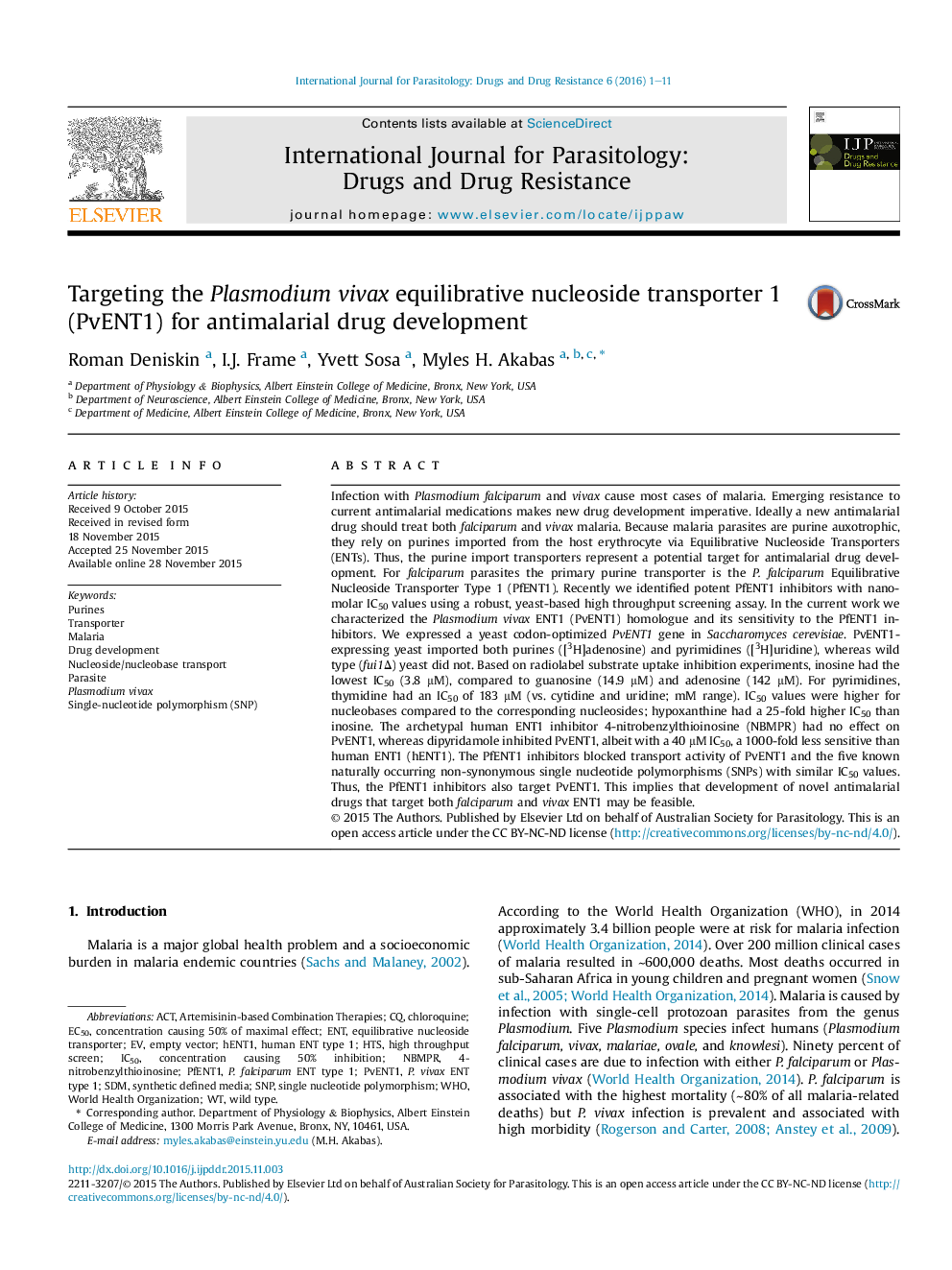| کد مقاله | کد نشریه | سال انتشار | مقاله انگلیسی | نسخه تمام متن |
|---|---|---|---|---|
| 2055123 | 1075729 | 2016 | 11 صفحه PDF | دانلود رایگان |
• PvENT1 can be functionally expressed in Saccharomyces cerevisiae.
• PvENT1 transports purine and pyrimidine nucleosides and nucleobases but does not transport nucleotides.
• PvENT1 is inhibited by recently described PfENT1 inhibitors with similar potency.
• Identified PvENT1 non-synonymous SNPs do not change PfENT1 inhibitor potency.
• Plasmodium ENTs may be feasible target for development of novel antimalarial drugs.
Infection with Plasmodium falciparum and vivax cause most cases of malaria. Emerging resistance to current antimalarial medications makes new drug development imperative. Ideally a new antimalarial drug should treat both falciparum and vivax malaria. Because malaria parasites are purine auxotrophic, they rely on purines imported from the host erythrocyte via Equilibrative Nucleoside Transporters (ENTs). Thus, the purine import transporters represent a potential target for antimalarial drug development. For falciparum parasites the primary purine transporter is the P. falciparum Equilibrative Nucleoside Transporter Type 1 (PfENT1). Recently we identified potent PfENT1 inhibitors with nanomolar IC50 values using a robust, yeast-based high throughput screening assay. In the current work we characterized the Plasmodium vivax ENT1 (PvENT1) homologue and its sensitivity to the PfENT1 inhibitors. We expressed a yeast codon-optimized PvENT1 gene in Saccharomyces cerevisiae. PvENT1-expressing yeast imported both purines ([3H]adenosine) and pyrimidines ([3H]uridine), whereas wild type (fui1Δ) yeast did not. Based on radiolabel substrate uptake inhibition experiments, inosine had the lowest IC50 (3.8 μM), compared to guanosine (14.9 μM) and adenosine (142 μM). For pyrimidines, thymidine had an IC50 of 183 μM (vs. cytidine and uridine; mM range). IC50 values were higher for nucleobases compared to the corresponding nucleosides; hypoxanthine had a 25-fold higher IC50 than inosine. The archetypal human ENT1 inhibitor 4-nitrobenzylthioinosine (NBMPR) had no effect on PvENT1, whereas dipyridamole inhibited PvENT1, albeit with a 40 μM IC50, a 1000-fold less sensitive than human ENT1 (hENT1). The PfENT1 inhibitors blocked transport activity of PvENT1 and the five known naturally occurring non-synonymous single nucleotide polymorphisms (SNPs) with similar IC50 values. Thus, the PfENT1 inhibitors also target PvENT1. This implies that development of novel antimalarial drugs that target both falciparum and vivax ENT1 may be feasible.
Figure optionsDownload as PowerPoint slide
Journal: International Journal for Parasitology: Drugs and Drug Resistance - Volume 6, Issue 1, April 2016, Pages 1–11
